Wide Sentencing Disparity Found Among U.S. Judges
The New York Times by Mosi Secret - March 5, 2012
A new analysis of hundreds of thousands of cases in federal courts has found vast disparities in the prison sentences handed down by judges presiding over similar cases, raising questions about the extent to which federal sentences are influenced by the particular judges rather than by the specific circumstances of the cases. The trove of data subjects individual district court judges to a level of scrutiny unprecedented in the history of the judiciary. In the Eastern District of New York, for example, the 28 judges in the study delivered a median sentence of 24 months for drug cases in the past five years. But there were disparities: Judges Jack B. Weinstein and Kiyo A. Matsumoto gave median drug sentences of 12 months, while the median drug sentence for Judge Arthur D. Spatt was 64 months. The Eastern District ranked 17th among more than 80 districts in drug sentencing disparities. Until the release of the data on Monday, it was difficult to review a judge’s sentencing history over time, because public court records in criminal cases could not be searched by the names of judges, only by the names of criminal defendants or lawyers. In addition, the United States Sentencing Commission excludes the name of the judge from its sentencing data, in part, experts said, because of the judiciary’s concern that such data could be used to single out judges, who were freed from restrictive sentencing guidelines in 2005. The new data were obtained under the Freedom of Information Act and analyzed by the Transactional Records Access Clearinghouse, or TRAC, an organization based at Syracuse University that gathers data on the federal government. The study covered each sentence imposed by federal district court judges in the past five years, for drug, white-collar and other kinds of crimes. Judges who had not sentenced at least 50 defendants were excluded, resulting in a pool of 885 judges who cumulatively had sentenced more than 370,000 defendants.
The Southern District of New York ranked eighth in white-collar sentencing disparity. Some judges, like John F. Keenan and Sidney H. Stein, sentenced most of their white-collar defendants to no time at all, while the typical sentence of another judge, Lewis A. Kaplan, was almost 23 months. The report said that in the Northern District of Texas, the median prison sentence for convicted drug defendants from some judges was as low as 60 months. A typical sentence for another judge was nearly three times as long, at 160 months. Former federal judges and sentencing experts pointed to what they said were the limitations in analysis of the data and cautioned against quick conclusions. “This kind of data doesn’t show very much,” said Nancy Gertner, a former judge in Federal District Court in Boston who favors releasing data about judges. “It doesn’t begin to address caseload or prosecutorial decisions. It doesn’t begin to address disparity.” Prosecutors often recommend lower sentences for defendants who cooperated with the government to build cases against others. Some sentences might be a result of plea agreements. The TRAC study did not separate cooperation agreements and plea deals before making calculations on disparities, but the database and analysis tool does include case-by-case details showing which cases fall into those categories. Without a more detailed analysis of data, the judges and sentencing experts who were interviewed said they worried about the possibility of drawing judges into a heated debate driven not by policy decisions but by posturing of politicians who want to appear tough on crime. “The unduly harsh judge escapes concern while the lenient judge gets hit,” said Douglas A. Berman, a professor at the Moritz College of Law at Ohio University, who closely follows sentencing law and policy. Judge Gertner said, “The notion of the data surfacing in a rational, thoughtful world would not be a bad idea.” But she cautioned that she had “concerns that it will be used as part of this vitriolic political battle.” The TRAC report seemed to anticipate the political stakes and cautioned against using the data to remove judicial discretion. Congress sets penalties for federal crimes. For much of the history of the courts, federal judges, who are appointed by the president and confirmed to life terms by the Senate, were free to hand down sentences as they saw fit. Congress passed the Sentencing Reform Act in 1984, spurred by evidence of sentencing disparities. The law established the federal sentencing commission, which wrote mandatory guidelines for judges to follow as they punished convicts, with similar sentences for offenders having comparable criminal histories who are convicted of the same crimes. For example, a defendant convicted of conspiracy to possess and distribute narcotics could face a sentence of 108 to 135 months under the guidelines. The range could be raised if the defendant played a leadership role in the crime or lowered if the defendant had a history of drug abuse or was a minor player in the crime. But after a challenge to the constitutionality of requiring sentencing judges to consider facts that were not weighed by a jury, the Supreme Court untethered judges from the guidelines with its decision in the case of United States v. Booker in 2005. The sentencing guidelines are now advisory, not mandatory. Judges again gained broad discretion, though in practice many still sentence defendants within the guideline ranges. Still, questions again surfaced about whether judges with such latitude would treat convicted defendants fairly. As recently as last October, a House subcommittee conducted a hearing titled “Uncertain Justice: The Status of Federal Sentencing and the U.S. Sentencing Commission Six Years after U.S. v. Booker.” In the past, such hearings stoked controversy. In a House Judiciary subcommittee meeting in 2002, Judge James M. Rosenbaum, then the chief District Court judge in Minnesota and a Ronald Reagan appointee, testified in support of legislation to decrease penalties for certain drug offenses. Republican members of the committee made an inquiry into his sentencing history after the hearing. Congress then passed legislation that limited judicial discretion and authorized the collection of sentencing data on individual judges. The confrontation grew so heated that Chief Justice William H. Rehnquist, a conservative, came to the defense of the judiciary in a public statement. Justice Rehnquist warned that collecting data on judges’ sentencing practices “could amount to an unwarranted and ill-considered effort to intimidate individual judges.” The TRAC data, which will be updated monthly, and a tool to analyze the data are available on the TRAC Web site for a fee. “It’s profoundly valuable that TRAC will assemble this data,” Mr. Berman said. “But now it’s profoundly important that serious researchers get to the data.”
MLK said: "Injustice Anywhere is a Threat to Justice Everywhere"
End Corruption in the Courts!
Court employee, judge or citizen - Report Corruption in any Court Today !! As of June 15, 2016, we've received over 142,500 tips...KEEP THEM COMING !! Email: CorruptCourts@gmail.com
Most Read Stories
- Tembeckjian's Corrupt Judicial 'Ethics' Commission Out of Control
- As NY Judges' Pay Fiasco Grows, Judicial 'Ethics' Chief Enjoys Public-Paid Perks
- New York Judges Disgraced Again
- Wall Street Journal: When our Trusted Officials Lie
- Massive Attorney Conflict in Madoff Scam
- FBI Probes Threats on Federal Witnesses in New York Ethics Scandal
- Federal Judge: "But you destroyed the faith of the people in their government."
- Attorney Gives New Meaning to Oral Argument
- Wannabe Judge Attorney Writes About Ethical Dilemmas SHE Failed to Report
- 3 Judges Covered Crony's 9/11 Donation Fraud
- Former NY State Chief Court Clerk Sues Judges in Federal Court
- Concealing the Truth at the Attorney Ethics Committee
- NY Ethics Scandal Tied to International Espionage Scheme
- Westchester Surrogate's Court's Dastardly Deeds
Tuesday, March 6, 2012
Wide Sentencing Disparity Found Among U.S. Judges
Subscribe to:
Post Comments (Atom)
Blog Archive
-
▼
2012
(320)
-
▼
March
(38)
- Former Attorney Ethics Committee Member Suspended ...
- Supreme Court Revisits Prosecutorial Misconduct
- Lawyer, Heal Thyself
- Attorney Is Suspended for Failure to Honor Fee-Sha...
- Many Judges Say Pay Hike is 'Too Little, Too Late'
- Insight Into Judicial Pay Panel Fiasco
- Immigration Lawyer Slapped with $1.1 Million in Da...
- The Selective Hearing of the Truth
- Top Ethical Attorney Eliot Spitzer and Friends in ...
- The Corrupt Picking of Judges
- Time to Demand Justice
- The Illusions of a Post-Racial Era
- We Are All Lawyers Today
- Ex-Con Gets Law License While Political Retaliatio...
- Attorney Is Sanctioned for 'Unbelievable' Violatio...
- Court of Appeals Faults Trial Judge For Curt Ways
- Federal Judge Hints That Another "Fix Is In"
- NY Times Editorial: "Federal Judge Should Resign"
- Former Prisoner May Pursue Malpractice Suit Agains...
- Critics Say New York Law Schools Lie
- Sealed Files, Again
- Ex-Bridgeport Mayor May Get Law License Back
- Wide Sentencing Disparity Found Among U.S. Judges
- Charges Weighed for Lawyer Who Revealed Witness’s ...
- New, Creative Way to Fix Court Cases
- Federal Courts Can't Remain Silent on Civil Rights...
- Lawyer, Looking-For-Favors As Prosecutor, Pleads G...
- Judge Thomas K. Keefe Backs 1st Amendment Rights
- Madoff Trustee Compromises with Former SEC General...
- MORE ON: Federal Judge Who Filed Complaint Against...
- Judge Who Pulled Gun in Court Leaving Bench
- Attorney's Improper Remarks Warrant Retrial, Panel...
- Could Interest in Truth be Returning to Courts?
- Federal Judge Files Ethics Complaint Against Feder...
- Another New York Legal Embarrassment
- Three Lawyers Charged in $279 Million Insurance Scam
- Lawsuit Says It's Time For Public Servants to Pay ...
- New Judge Sets March Trial Date for Protracted Cus...
-
▼
March
(38)
See Video of Senator John L. Sampson's 1st Hearing on Court 'Ethics' Corruption
The first hearing, held in Albany on June 8, 2009 hearing is on two videos:
Video of 1st Hearing on Court 'Ethics' Corruption
The June 8, 2009 hearing is on two videos:







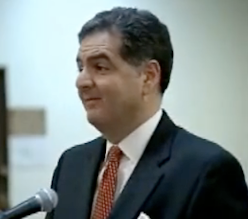

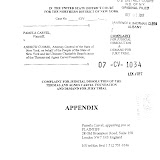
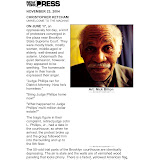

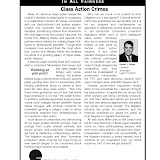

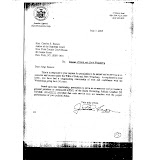
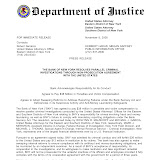
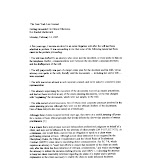

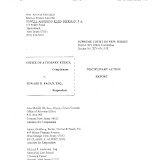
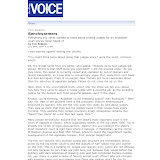

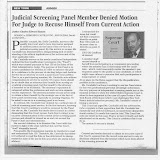

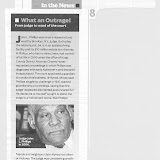
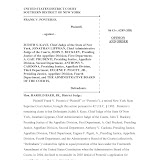
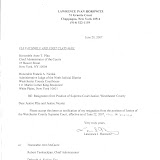
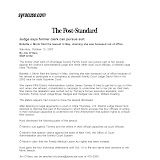
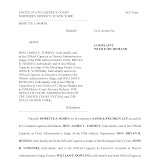

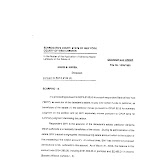
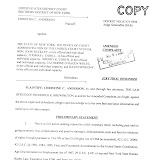
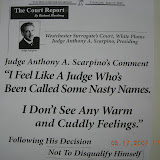
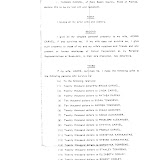
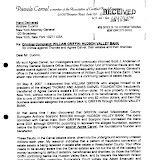
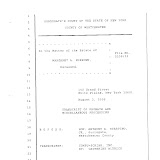
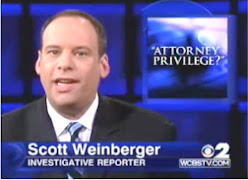
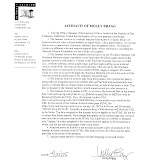

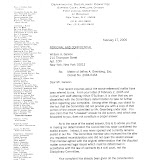
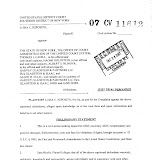
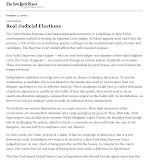
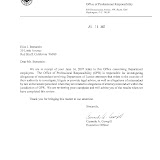
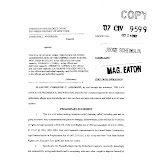
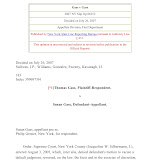
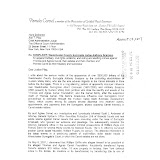

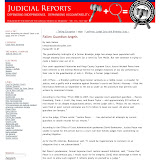
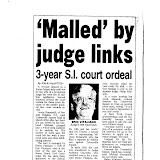

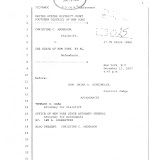
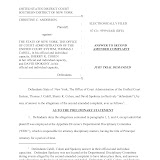
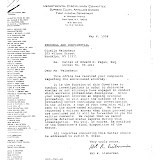
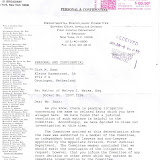
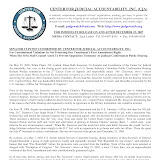

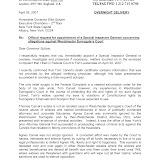
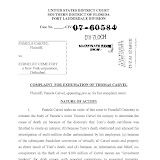
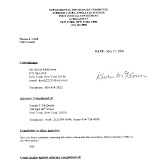
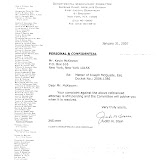
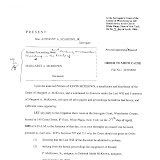
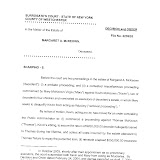
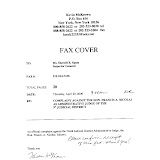
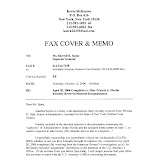
7 comments:
Im confused. I thought all federal sentences were set by mandatory rules?!?!?!
No it depends on the size of the bribe the judge receives
Civil rights are at the whim of the judge. Sentencing is at the whim of the judge. We have protect our judges from scrutiny so they can make more whimsical decisions. "Our courts deserve no respect as they follow no consistent laws and are a system of self-serving despots enriching themselves and their cronies." Marbury v Madison, revised 2012
Here's an idea:
Why doesn't the Transactional Records Access Clearinghouse do an analysis on the chances of someone pro se even getting their case to go anywhere but the recycle bin?
I'll bet that they won't be able to find even one case that has gone to trial, which is everyone's constitutional right.
I saw this disparity for years, as a NY state Ct clerk.
DWI'S esp, as one judge never orders a pre-sent investigation and hands out a conditional discharge from the bench..no conditions and lowest fine or the ever fraudlent sentence of TS..time served. Most TS defts in NY State have never been close to a jail.
The majority of judges order a pre-sent investigation and put defts on Probation with several severe conditions. All have same type of record and similar BAC as the one with the CD.
Assault and petit larceny convictions get probation most of the time with jail only if the deft fails probation...and if the defts are white this is always the case.
People stealing hundreds of thousands of dollars from their employer..Probation... esp if a white female...if black male it just has to be 2-3 arrests and a few bucks..even with the many female and black judges in the state system I worked with..they become just like the white judges when robed!
The answer is mandatory, but I saw a black judge abuse that even though he was told to stop.
He liked to hand out TIME SERVED sentence to show his record was tough using some form of jail sentencings..lol, even though defts were all given appearance tickets and the "arrests" were the few minutes the defts could not leave while the ticket was being written.
This Judge got furious with me for reminding him of the mandates per my supervisors cowardly method of not approaching him directly.
So again... the problems with the American Justice systems are judical corruption and arrogance that needs public monitoring and accountability.
Eliminate the CJC for open investigations that are public from minute one and conducted and monitored by the non-legal public and no political interference...otherwise this report will continue with the same history for several more decades, that I saw it happening!
Your sentence dpends on amount of the bribe the Federal Judge and his Clerk take.
No money off to prison you mere Citizen with no rights. No trial no hearing poof you are gone. The Second Circuit has a BIG middle finger for working class citizens.
Next Wealthy hunting Poor for sport. It's coming you'll see.
Leukemiascandal.com
The judges are corrupted by the failure of any ethic oversight; the system is broken, without any justice; and the sheeple are told to respect the courts by the media.
Lord Acton who wrote, "Power corrupts,... There is no worse heresy than that the office sanctifies the holder of it." also wrote "Every thing secret degenerates, even the administration of justice; nothing is safe that does not show how it can bear discussion and publicity," which the media fails to allow. The media supports the heresy that judges and courts are honest and just. Our courts have degenerated and degenerates are in charge.
Post a Comment